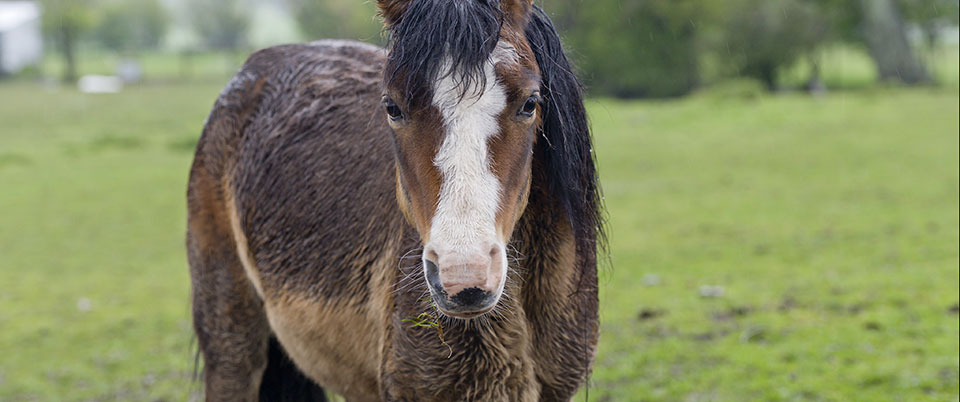
Mud Fever is extremely common in the winter and early spring months and causes serious problems for those horses and their owners that suffer from the condition. If left untreated the condition can worsen and could lead to more serious conditions such as Cellulitis and Lymphangitis. Understand what Mud Fever is, it’s causes and our tips on how to avoid problems this winter.
Mud Fever, or Equine Pastern Dermatitis, is the name given to a range of dermatological reactions, which are caused by an infection of the skin by bacterial or fungal irritants. The most common of these causes is the bacteria dermatophilosis congolensis, which thrives in wet and muddy conditions.
What causes Mud Fever?
A horse’s skin usually serves as an effective barrier, protecting the horse from the bacteria and fungi in the mud. However, in wet and muddy conditions the integrity of the upper layer of skin can become damaged by the abrasion of soil grit on cold, wet skin. When the skin is continually damp, the protective barrier of the epidermis breaks down, and bacteria and fungi can enter the horse’s epidermal layers. This results in an acute inflammatory reaction – Mud Fever.
The following are the most common predisposing factors:
- Deep, muddy paddocks or soiled bedding, These conditions harbour the bacteria which causes Mud Fever, and damage the horses skin, allowing the bacteria to enter the horse’s epidermal layers and cause infection.
- Prolonged exposure to damp conditions
- Excessive washing of limbs without fully drying afterwards
- Excessive sweating under rugs or tack
- Skin trauma
- Mange mites (fungal)
- Generally unhealthy skin, or a poor immune system
- White limbs can make a horse more prone to Mud Fever, but the condition can affect all horses.
Tips on avoiding Mud Fever
Avoid letting paddocks become overly muddy or poached. If possible, rotate paddocks and fence off areas with deep mud.
Avoid leaving horses stood in wet, muddy fields for long periods of time.
Use a barrier cream or oil to create a protective barrier between the horse’s skin and the mud.
Use protective boots to serve as a barrier between the horses leg and the mud. Be careful to ensure that these do not cause rubbing on the horses leg, as this could damage the skin.
Brush dry mud off the legs with a soft brush rather than hosing the legs down.
If a horse’s legs must be hosed down, ensure they are thoroughly dried afterwards using a clean, dry towel.
Further reading
Mud fever: signs, treatment and prevention by Horse & Hound Visit page
Mud Fever by Animed Veterinary Hospital Visit page
